How to choose artwork for your restaurant
What you use to adorn your walls is as important as any other element in a restaurant, and a carefully curated selection of artworks can create an atmosphere and inspire an instant and memorable reaction. So let your walls do the talking, says Glynn Davis.
In the Tate Modern on London’s South Bank hangs a group of paintings by abstract expressionist painter Mark Rothko named the Seagram Murals. These paintings should have been proudly displayed on the walls of the Four Seasons restaurant in Manhattan, when the building’s owners commissioned the works ahead of the dining room’s launch in the late 1950s.
But, famously they never made it onto the walls of the restaurant, as the cantankerous Rothko grew to hate the idea that his work would hang in front of rich people spending outrageous sums of money on food, when he had once suggested that it was “criminal to spend more than $5 on a meal”.
Rothko handed back the not inconsiderable $35,000 (£25,380) commission and stated: “Anybody who will eat that kind of food for those kind of prices will never look at a painting of mine.”
Thankfully, this is very much the exception of art not mixing very well with food. There are many positive stories of restaurateurs like Mark Hix feeding young artists in exchange for artworks to hang in their restaurants. The most notable example is in Saint-Paul-de-Vence in the south of France, where such an arrangement has over the years made the La Colombe d’Or hotel and restaurant world-renowned for the works from Henri Matisse, Pablo Picasso, Joan Miró and Marc Chagall that grace its walls.
Pretty as a picture
Today, pieces of art sit incredibly comfortably within hospitality environments and are very much appreciated by customers as opposed to being unnoticed adornments as Rothko once suspected. At the forefront of successfully mixing art and hospitality is contemporary art dealer Hauser & Wirth, which is building a growing number of hybrid art/hospitality venues around the world under its Artfarm umbrella, incorporating pieces from the globally renowned artists they represent. Within the UK, Hauser & Wirth operates the Fife Arms in Braemar, Aberdeenshire, the Roth Bar & Grill in Bruton, Somerset, and the brand is currently overhauling the Audley pub in London’s Mayfair.
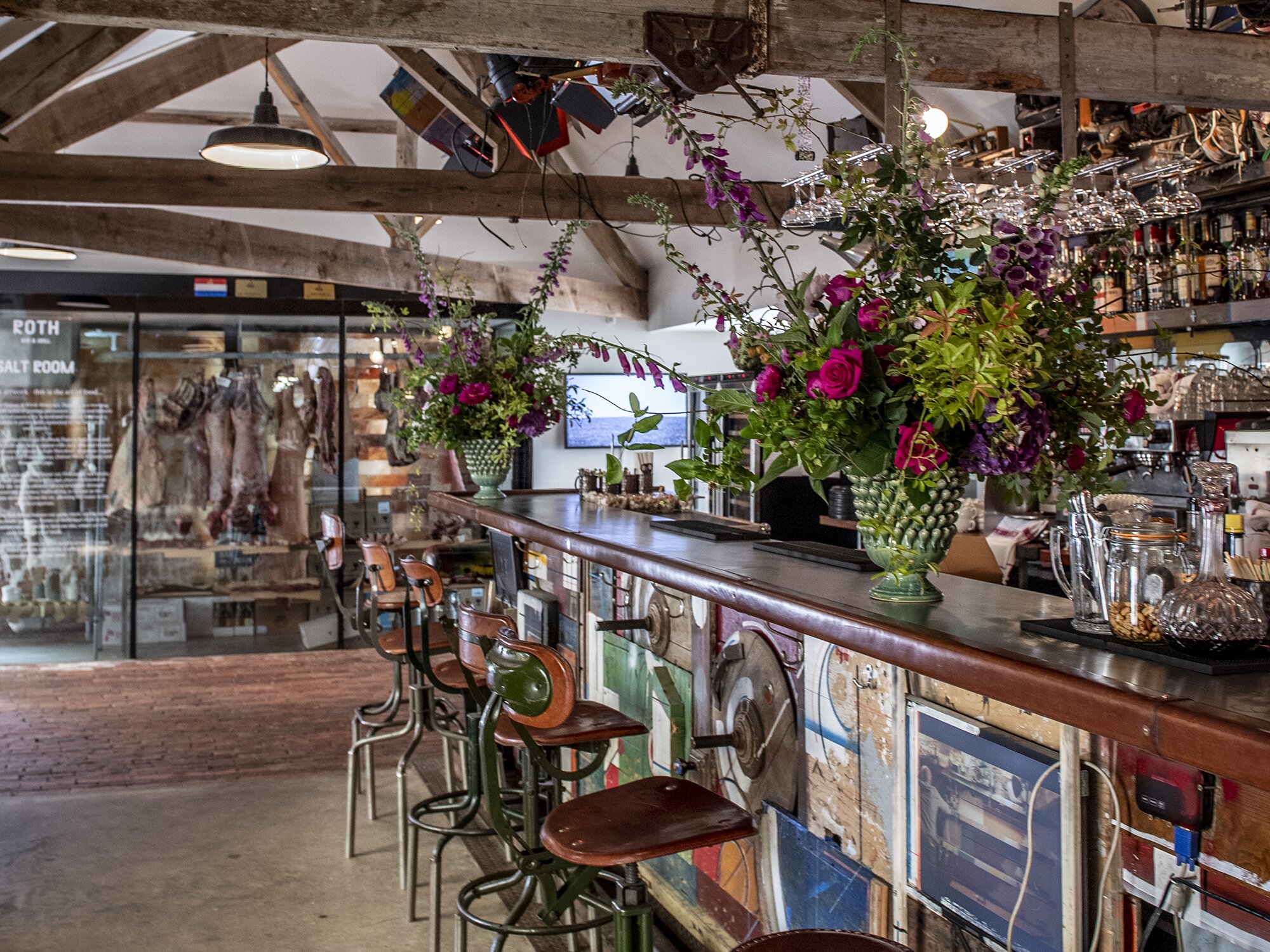
Jules Horrell, operations manager for Artfarm in Somerset, says Hauser & Wirth had previously brought interesting and creative food into their galleries for exhibition launches. Rather than simply choosing to open more “austere” gallery venues in new locations, they instead decided to make them more accessible to a broader mix of people by combining art gallery with restaurant and bar – as well as attractive gardens, farm shop and working farmland, where the space permits.
The Roth Bar & Grill came on the back of the gallerists having worked with the son and grandson of artist Dieter Roth to create a temporary facility at the Hauser & Wirth gallery in New York. The Bruton version comprises a specially commissioned bar made from scavenged materials, which constantly evolves as elements of waste are added. Onto this space flows the Grill, which sits alongside a multi-room gallery housed in former farm buildings.
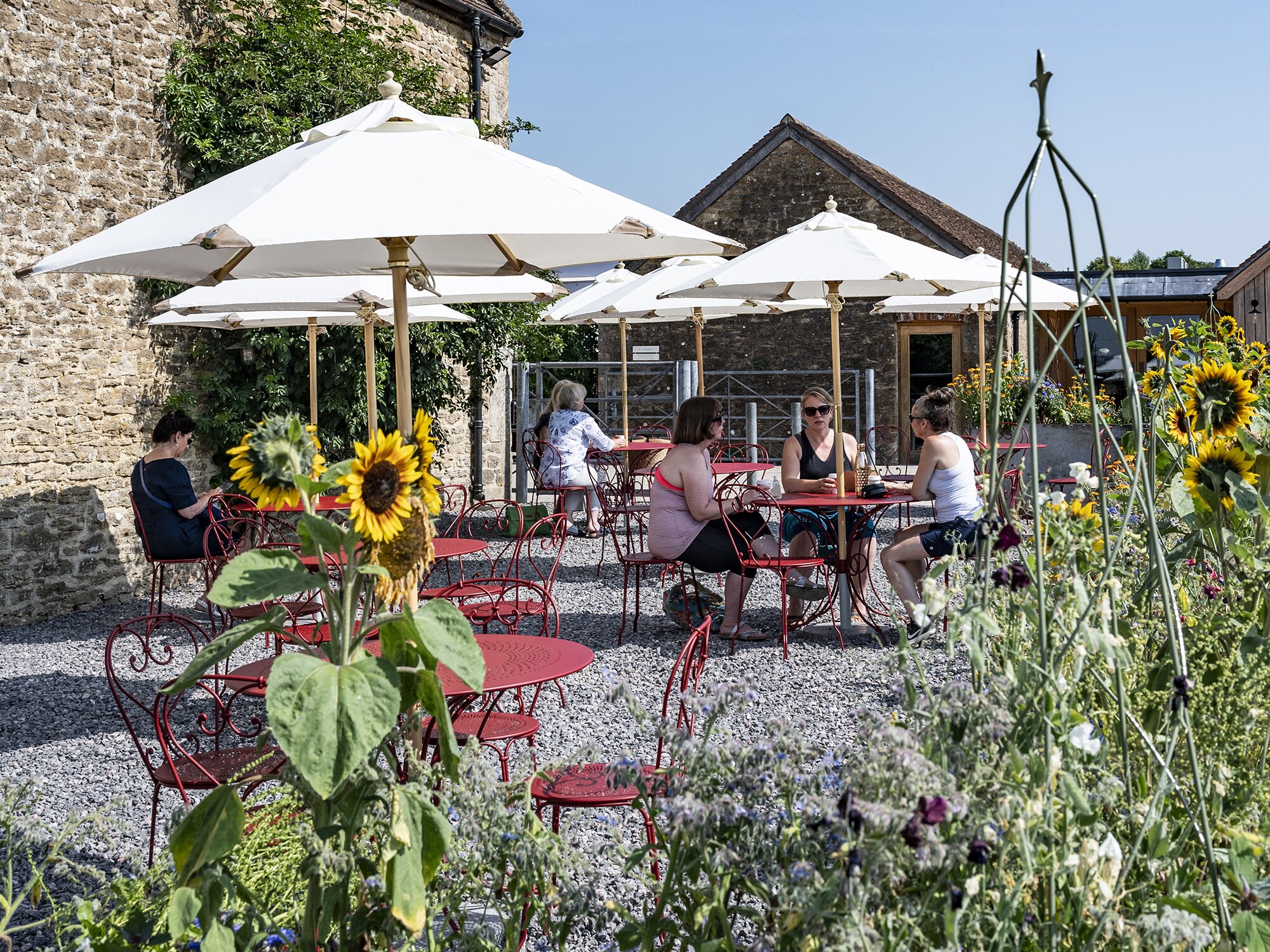
“We dovetail the art and food. Although galleries often have a restaurant, it is just for eating, whereas we wanted our restaurant to have an identity whereby some people will come for the art while others for the food. And they’ll probably all end up doing both. The art attracts collectors and the food and drink brings in other people,” she explains.
Where the two worlds fully merge is in the Grill restaurant, where around 100 works from various artists are displayed. The curation is handled organically, with constant changes taking place as pieces are moved to other locations and some are invariably sold. Once a year a wholesale overhaul takes place.
According to Horrell, such is the attraction of the art to some guests that they will ask to be seated near specific works. In order to enhance the guest experience fully, each member of the front of house team must be able to talk about some of the pieces.
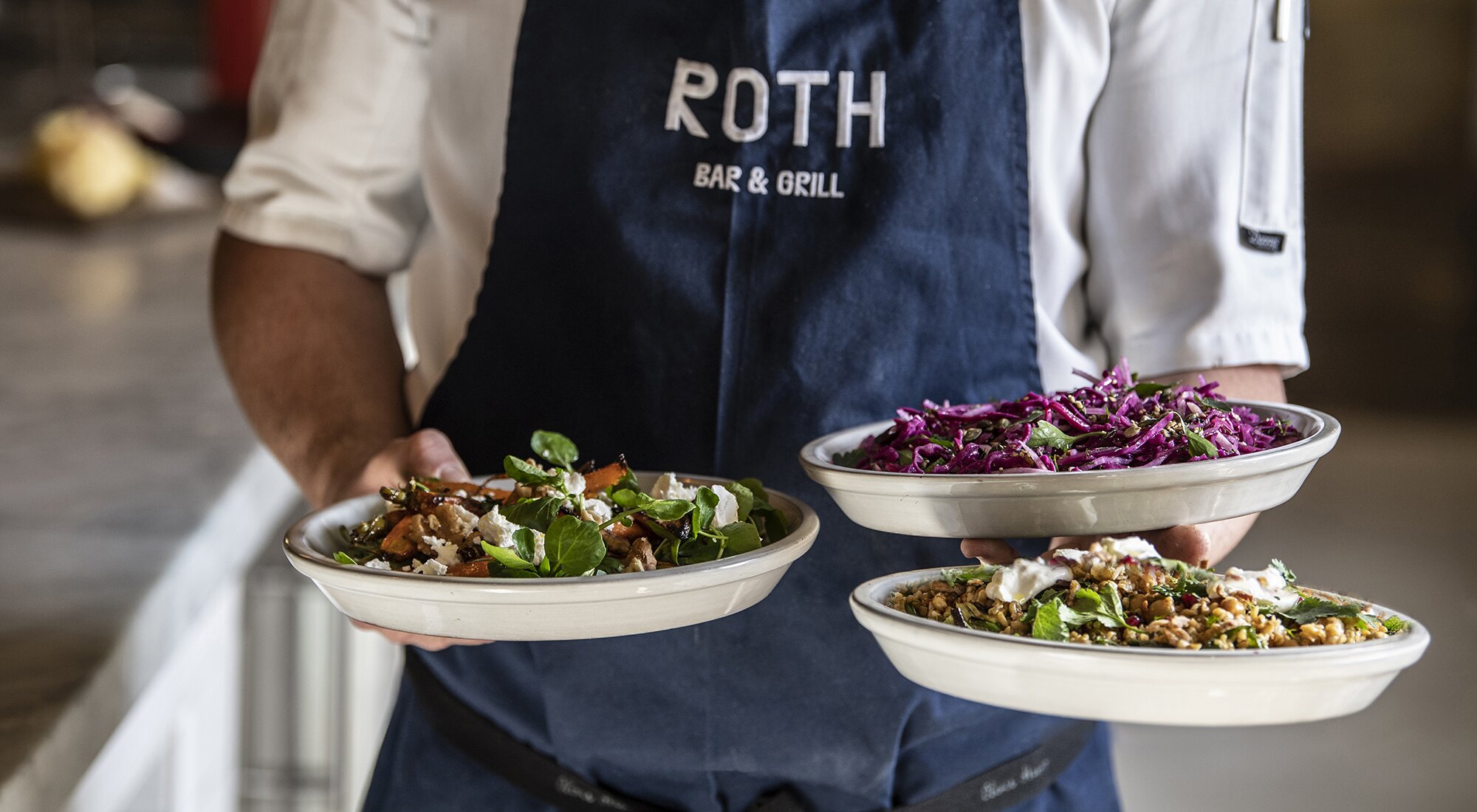
“We want them to have these interactions. They need to know about five works each in detail. When we have an artist visit [for their exhibitions], the team will get a chance to engage with them and tour the gallery with them. We get lots of art students coming to work for us. We prefer people to be green [to hospitality] but to be interested in art,” she says.
Unlike Rothko, Horrell believes people who are interested in art are also typically interested in food: “They are creative people. There are real similarities between the two.”
The big picture
David Moore, owner of the Michelin-starred Pied à Terre restaurant in London, believes this is an even stronger link between artists and restaurateurs: “We have a lot in common. We both start with a blank canvas. In the case of a restaurant it is a shell and we look to turn it into a thing of beauty,” he says. Art has certainly played a major part in the Pied à Terre story right from the start and has been a crucial factor in the space continually evolving over its lifetime.
Moore’s link to art began when artist Richard Hamilton became one of the biggest supporters of the restaurant when it first opened. “I knew Richard from my time at Le Manoir [aux Quat’Saisons], where he was a customer. He came in every week in the early days and we had some massively valuable works on loan from him in the restaurant. It was opportunistic and it was an angle for us,” he says.
Not only did this arrangement help the restaurant stand out from the growing crowd of high-end establishments in London, with its edgy, contemporary art, but the artist association fuelled an influx of more works.
“Art was a key part of our differentiation, and if you have an interest from artists in your restaurant, you can always barter with them. This helps cash flow and also you find the artists bring in their friends,” he explains.
Moore recommends visiting the graduation and post-graduation shows at London art colleges Goldsmiths, the Slade School of Fine Art and the Royal College of Art, and talking to the artists. “At the Slade I picked up various things by bartering. I’d pay £500 plus dinner for two instead of paying £1,000 for a piece,” he recalls.
At the Slade I picked up various things by bartering. I’d pay £500 plus dinner for two instead of paying £1,000 for a piece
Moore says this sparked his ongoing interest in art and prompted him to set up the ‘Artist in Restaurant’ programme, which ran from 2011 to 2014, and involved commissioning different artists each year to create pieces that were inspired by the venue.
“At the time the restaurant was flying [with two Michelin stars] and making good money, so it seemed like a good idea to have something else going on in the dining room beyond just wine and food. It has proved to be a very sound investment with some of the pieces worth considerably more today,” he says.
Eric Yu, founder of the Breakfast Group, which operates nine food and drink venues in the capital, very much agrees that art brings something else into the mix: “It’s another layer; it’s theatre. People do not go out to eat and drink, they go for the hospitality and this includes the music, the lighting and every other layer you can add, including art, which can be visually wonderful. To me, art is very important when creating an atmosphere.”
Art and soul
It is this thinking that has led the Belmond-operated Cadogan hotel in London’s Knightsbridge to recently bolster its art credentials with various installations and collaborations. Stuart Shaw, director of sales and marketing at the Cadogan, says: “The artwork is intended to evoke an emotional response in guests. It sets the tone for the whole experience and influences the ‘feel’ of the property.”
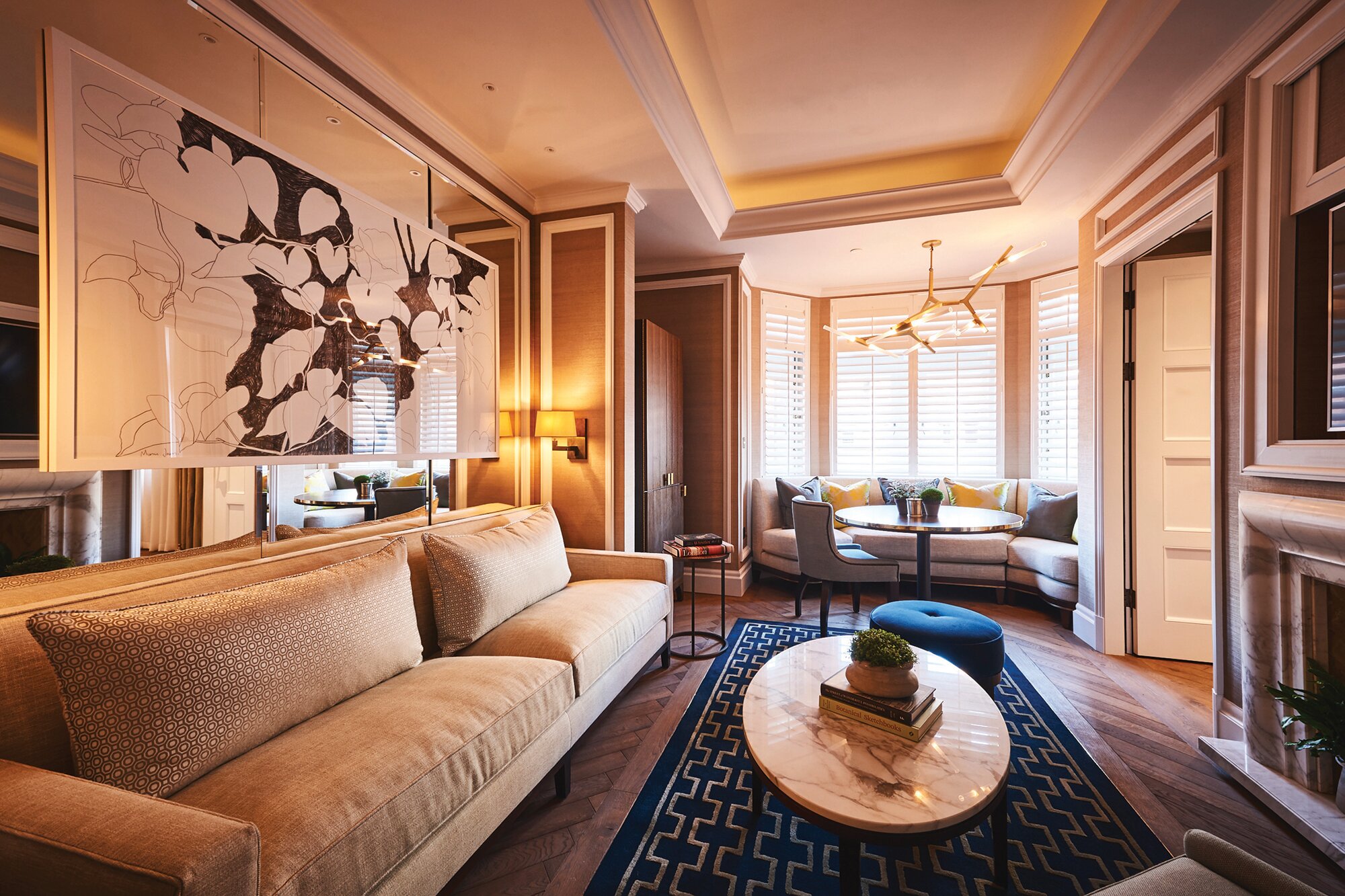
From the “hyper-charged, jewel-toned jungle scenes in the function rooms to the X-ray images of botanicals in the corridors”, he says each piece of art was curated to create a different atmosphere. “In the guest rooms the artists were all British women, and they each had different interpretations of the same space, meaning each room looks and feels different with its own ambience, explains Shaw.
He says art can be used to tell a story: “Of course, artwork should be beautiful and striking, but it can also be used to depict the heritage of the property or the people behind it. Artwork that shows personality makes a deeper and long-lasting connection with guests. The artwork embodies the soul of the hotel, honouring its rich heritage and Chelsea location.”
He cites a particularly prominent piece in the lobby – a commissioned oil painting from English artist Simon Casson above the check-in desk – that tells the story of Sir Hans Sloane, who owned the Cadogan Estates – in a variety of different scenes.
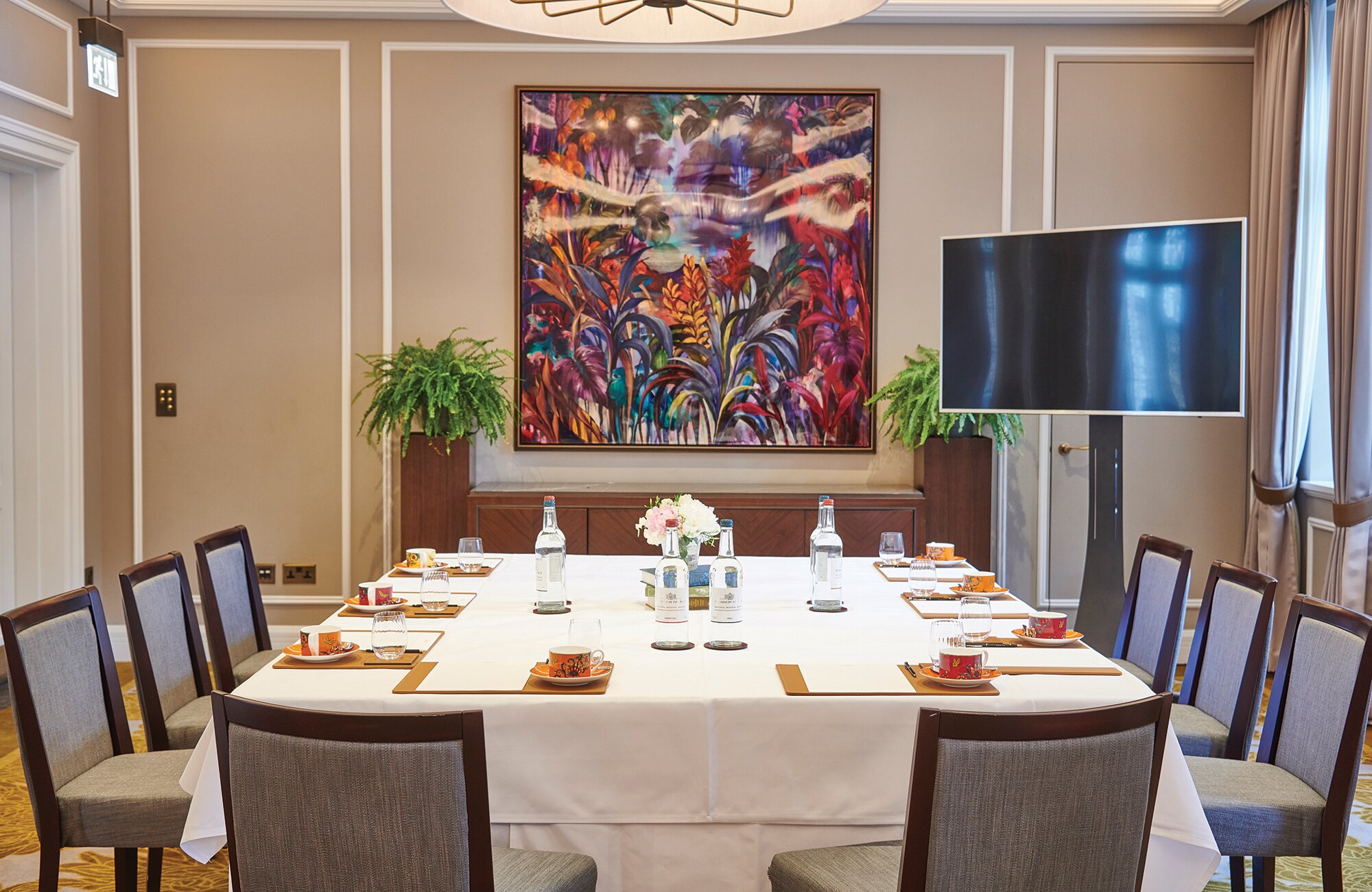
Although the Cadogan only has a modest 54 rooms, there are more than 430 original works of art displayed throughout its halls and guest spaces. For instance, each guest room has an original commissioned headboard piece by one of five female artists who were selected from a wide pool of candidates for their distinctive style and strong ties to Britain.
“The selected artists were invited to explore Cadogan Place Gardens and use them as their inspiration. They were given free rein to interpret the space in their own terms to create completely bespoke artworks,” says Shaw.
The hotel brought in the expertise of curator and consultant Minda Dowling, who Shaw says has been instrumental in the direction and sourcing of the recent artworks for the hotel. Working with external expertise has also been part of the process for Yu at his new bar, the Last Talisman in the Bermondsey area of London. His use of art has been taken to another level, compared with his other venues, whereby the space is also effectively acting as an art gallery following an arrangement made with a local art agency.
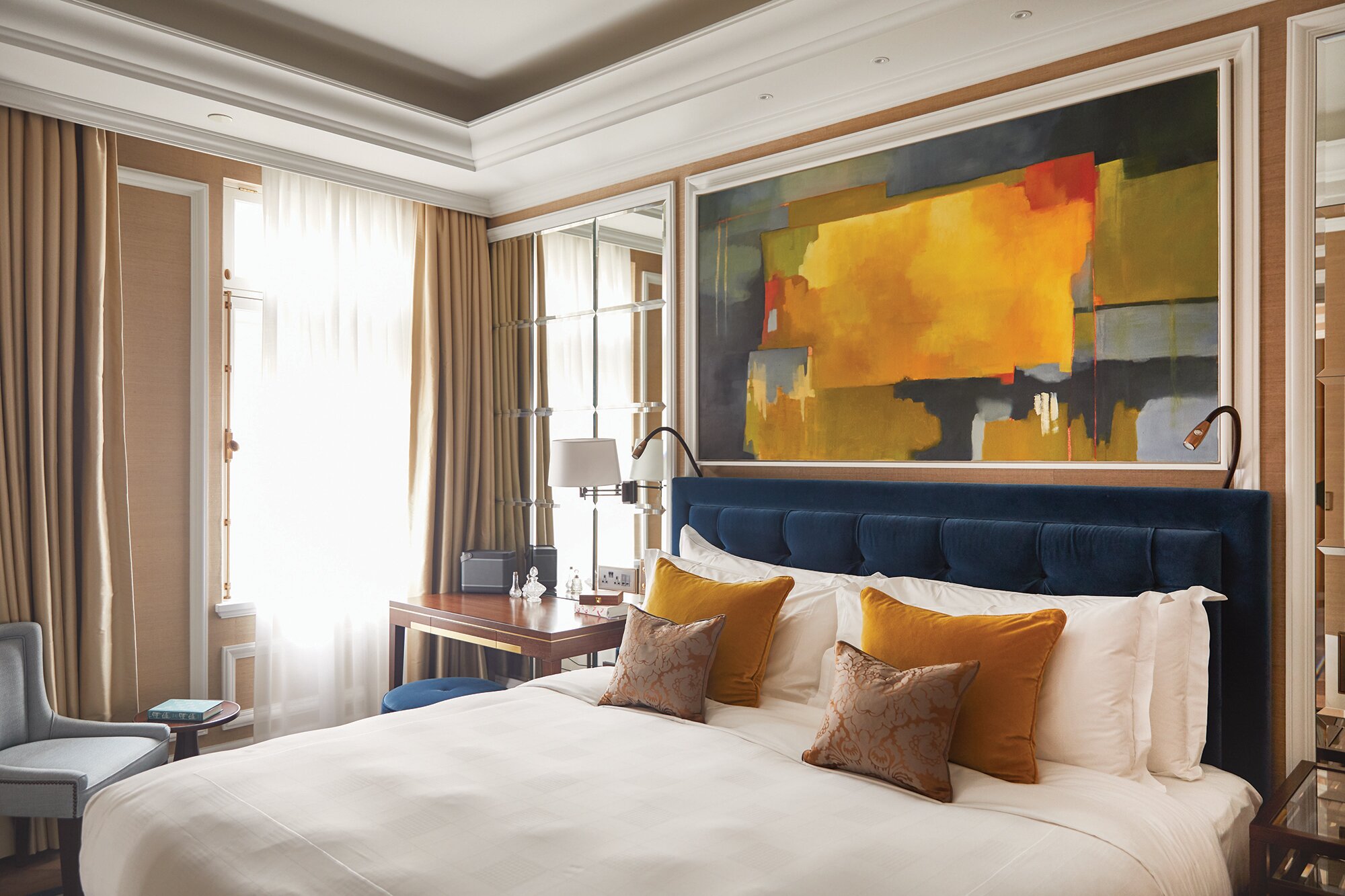
Yu’s friend Sammy Forway had closed his physical gallery near to the Last Talisman and set up Wild Beasts art agency, and the two decided that rather than Yu buying art for the new bar he would instead hangs works from artists represented by Wild Beast.
“It seemed like a natural thing. He has no venue and we don’t have to buy any art. If we sell any pieces we get a bit of commission along with the agency and artist. The collections will be rotated three to four times per year, and so we get the opportunity to do shows to the press and our database of customers for each one. We also get the agency to promote them too. Every show brings visitors into the venue,” says Yu.
He believes such an arrangement between hospitality venues and art dealers has lots of potential. “Having bricks and mortar for a gallery is a thing of the past. A lot of art dealers don’t need gallery space. Why not instead use other venues? I see it as part and parcel of our decoration. It’s not rocket science.” In fact, he likes the idea so much that he has already extended it to his latest outlet – the members-only Martinez bar on Soho’s Greek Street.
So despite the misgivings of Rothko, the ongoing story of art and hospitality continues to suggest it is very much a symbiotic relationship, with both areas complementing each other and ultimately providing a much richer experience for the customer.
Drawing inspiration
David Moore, Pied à Terre
“When you are looking at a piece of art, always consider the scale of it to ensure it fits into the restaurant. The art also needs to be appropriate for the venue and not be too graphic. You should always consider prints, as they are much more affordable, and you can buy good pieces for tens of thousands versus billions for the originals.”
Eric Yu, the Breakfast Group
“Find yourself a good art dealer. First and foremost they have to be someone you enjoy spending time with. It’s not dissimilar to finding a great designer who you are on the same wavelength with. I now see them as a partner in the business. It’s in their interest and mine to make it a successful arrangement.”
Stuart Shaw, the Cadogan
“If our guests don’t have time to delve into local culture in a museum, they can find rich history in the artwork. Of course, if a guest uses the artwork as a backdrop for their social media post, it’s great exposure for the artist and for the hotel.”



















